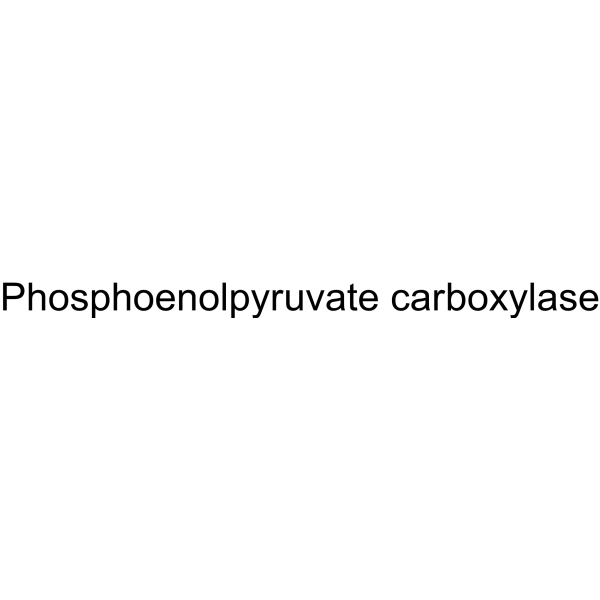Phosphoenolpyruvate carboxylase

Phosphoenolpyruvate carboxylase structure
|
Common Name | Phosphoenolpyruvate carboxylase | ||
|---|---|---|---|---|
| CAS Number | 9067-77-0 | Molecular Weight | N/A | |
| Density | N/A | Boiling Point | N/A | |
| Molecular Formula | N/A | Melting Point | N/A | |
| MSDS | USA | Flash Point | N/A | |
Use of Phosphoenolpyruvate carboxylasePhosphoenolpyruvate carboxylase (PEPC) is a carbon dioxide fixing enzyme that in an irreversible manner and in the presence of Mg2+, converts phosphoenolpyruvate and bicarbonate into oxaloacetate and inorganic phosphorus. Phosphoenolpyruvate carboxylase catalyses the primary assimilation of CO(2) in Crassulacean acid metabolism plants. Phosphoenolpyruvate carboxylase plays a major role in setting the day-night pattern of metabolism in plants[1][2]. |
| Name | EC 4.1.1.31 |
|---|
| Description | Phosphoenolpyruvate carboxylase (PEPC) is a carbon dioxide fixing enzyme that in an irreversible manner and in the presence of Mg2+, converts phosphoenolpyruvate and bicarbonate into oxaloacetate and inorganic phosphorus. Phosphoenolpyruvate carboxylase catalyses the primary assimilation of CO(2) in Crassulacean acid metabolism plants. Phosphoenolpyruvate carboxylase plays a major role in setting the day-night pattern of metabolism in plants[1][2]. |
|---|---|
| Related Catalog | |
| References |
| Appearance of Characters | ammonium sulfate suspension |
|---|---|
| Storage condition | 2-8°C |
| Personal Protective Equipment | dust mask type N95 (US);Eyeshields;Gloves |
|---|---|
| Hazard Codes | Xi |
| Risk Phrases | 36/37/38 |
| Safety Phrases | 22-24/25-36-26 |
| RIDADR | NONH for all modes of transport |
| WGK Germany | 3 |
|
[Effect of growth factors and some microelements on biosurfactant synthesis of Acinetobacter calcoaceticus IMV B-7241].
Mikrobiol. Z. 75(5) , 18-26, (2013) The effect of yeast autolysate and microelements on synthesis of surface-active substances (SAS, biosurfactants) was investigated under cultivation of Acinetobacter calcoaceticus IMV B-7241 on various... |
|
|
High acid invertase activity for a prolonged period in developing seeds/podwall of wild chickpea is detrimental to seed filling.
Indian J. Exp. Biol. 50(10) , 735-43, (2012) In the present study factors responsible for low seed biomass in wild Cicer species has been investigated. Cicer judaicum and chickpea cultivar PBG-1 were investigated to compare activities of some en... |
|
|
[Effect of univalent cations on synthesis of surfactants by Acinetobacter calcoaceticus IMV B-7241].
Mikrobiol. Z. 75(2) , 10-20, (2013) The effect of univalent cations on activity of key enzymes of C2-metabolism has been investigated in the producer of biosurfactants, Acinetibacter calcoaceticus IMV B-7241 grown on ethanol. It was est... |